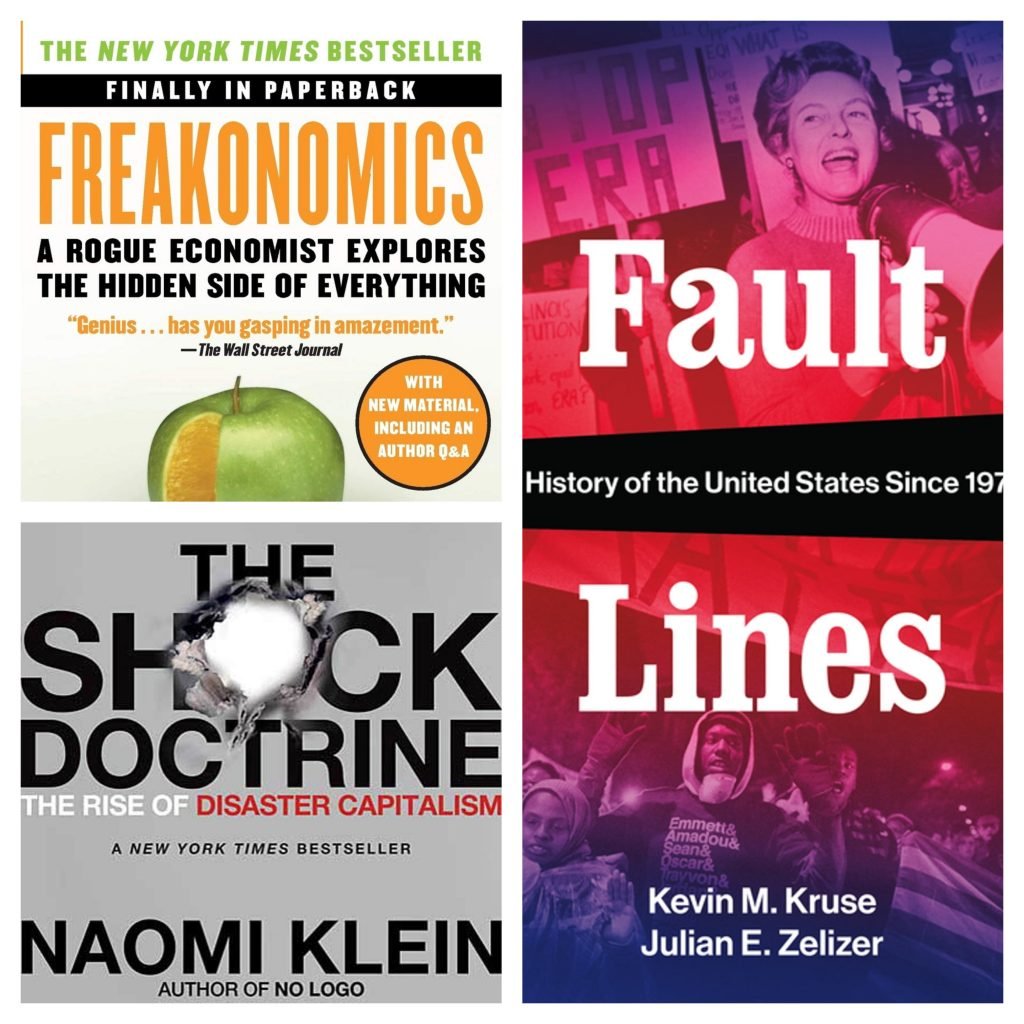Some of the top economics books are listed below. You can read free book summaries or listen to free audiobook summaries if you’re pressed for time.
Freakonomics
Steven D. Levitt
Which is more dangerous, a gun or a swimming pool? What do schoolteachers and sumo wrestlers have in common? Why do drug dealers still live with their moms? How much do parents really matter? How did the legalization of abortion affect the rate of violent crime?These may not sound like typical questions for an econo-mist to ask. But Steven D. Levitt is not a typical economist. He is a much-heralded scholar who studies the riddles of everyday life—from cheating and crime to sports and child-rearing—and whose conclusions turn conventional wisdom on its head.
Release Date: May 19, 2020
This book discusses incentives, including their three different forms—moral, economic, and social; the sharing of information during a transaction; human biases in the estimation of risk and casualty; and the effects of these concerns on individuals and the wider community.
The impact of rewards on people’s conscience is one of the main problems with incentives. Even though it might appear straightforward at first, it can result in unanticipated problems. Second, caution must be used while implementing incentives. It varies depending on the individual and the situation.
Due to “information asymmetry” in the way information is distributed, experts may occasionally mislead or misinform clients in order to benefit. However, if we stay on top of our problem, we can avoid problems.
Major problems People frequently overreact when estimating risks and casualties by worrying needlessly about dangers that are out of their control. Furthermore, when assigning blame for casualties, people frequently mistake distant causes for closer ones.
These are only a handful of the significant topics covered in this book.
The Shock Doctrine
Naomi Klein
In her groundbreaking reporting, Naomi Klein introduced the term “disaster capitalism.” Whether covering Baghdad after the U.S. occupation, Sri Lanka in the wake of the tsunami, or New Orleans post-Katrina, she witnessed something remarkably similar. People still reeling from catastrophe were being hit again, this time with economic “shock treatment,” losing their land and homes to rapid-fire corporate makeovers. The Shock Doctrine retells the story of the most dominant ideology of our time, Milton Friedman’s free market economic revolution.
Release Date: April 1, 2010
This book discusses the financial crisis, economic interventions, and many other topics. It also compares these initiatives to electroshock therapy.
The author first explained how organisations took advantage of the crisis as a platform and employed economic shock therapy to seize opportunities for themselves. The “Chicago Boys” were one such example cited.
Secondly, he describes how economic shock treatment only helps multinational firms and the wealthy at the expense of everyone else.
Thirdly, economic shock treatment may result in poverty and a society that is fearful and oppressed.
Fourthly, this book reveals the dark side of the era when Western powers discovered that depriving economically distressed nations of aid made those governments open their markets.
Fault lines
Kevin Michael Kruse and Julian E. Zelizer
When—and how—did America become so polarized? In this masterful history, leading historians Kevin M. Kruse and Julian E. Zelizer uncover the origins of our current moment. It all starts in 1974 with the Watergate crisis, the OPEC oil embargo, desegregation busing riots in Boston, and the wind-down of the Vietnam War. What follows is the story of our own lifetimes. It is the story of ever-widening historical fault lines over economic inequality, race, gender, and sexual norms firing up a polarized political landscape. It is also the story of profound transformations of the media and our political system fueling the fire.
Release Date: January 8, 2019
This book explores the global economic rifts that existed during the financial crisis, particularly the ones that occurred in 2008 and 2009. The crisis was brought on by these fault lines. These fault lines are described by the book’s author. These faultlines included;
Firstly, economic equality since nations, particularly the US, were unable to supply the market’s rising need for labour.
Secondly, the American economy was being overstimulated as a result of absorbing an excess of export goods and investments.
Thirdly, previous forecasting methods mostly depended on financial models. However, the new economic landscape was unheard of, and people have no solid foundation on which to rely.
Fourthly, the issue with incentives and the lack of risk management come in at number four.
The author offers us remedies in the shape of better education and the development of social safety nets. Them are the difficulties that he sees as having these as their root causes. Furthermore, he contends that reckless risk-taking needs to be reduced in order to ensure the financial sector’s long-term viability.
These were a few of the unrecognised yet extremely serious problems or fault lines that hurt the economy and drove it toward depression.
Therefore, we can learn a lot about some current economic issues and how to avoid them from these books.
